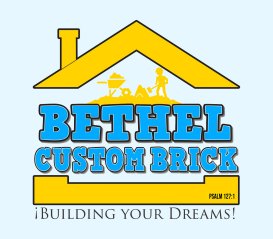Masonry structures, whether brick walls, chimneys, or facades, are renowned for their durability and timeless appeal. However, even the sturdiest masonry requires maintenance over time to ensure it remains both functional and beautiful. Tuckpointing, a critical masonry repair technique, is essential for restoring and maintaining mortar joints. But how do you know when your masonry needs this specialized service? Here are the top signs to look for and why calling a professional is key to preserving your brickwork.
What is Tuckpointing?
Tuckpointing involves removing deteriorated or damaged mortar from between bricks or stones and replacing it with fresh mortar. This process strengthens the structure, prevents water damage, and restores the masonry’s original aesthetic appeal. It’s an essential maintenance practice for both older buildings and newer constructions exposed to harsh weather conditions.
Signs Your Masonry Needs Tuckpointing
1. Cracked or Crumbling Mortar
Over time, mortar can crack or crumble due to weathering, moisture, and temperature fluctuations. If you notice visible damage in the mortar joints, it’s a clear sign that your masonry needs tuckpointing. Addressing these issues early prevents further structural degradation.
2. Gaps or Voids in Mortar Joints
Gaps in the mortar joints can allow water to seep into the masonry, leading to more severe damage. If you notice voids or uneven mortar, it’s time to consider tuckpointing to restore the integrity of the structure.
3. Loose or Shifting Bricks
When mortar deteriorates, it can no longer hold the bricks or stones securely in place. This can lead to loose or shifting bricks, compromising the stability and safety of the structure. Tuckpointing helps re-secure the bricks by reinforcing the mortar joints.
4. Discoloration or Staining
Stains or discoloration on the mortar can indicate water damage or efflorescence, a condition caused by salt deposits left behind when water evaporates. Tuckpointing can address these issues by sealing the joints and preventing further moisture infiltration.
5. Water Seepage or Moisture Damage
Water seepage is a common issue when mortar joints are compromised. Signs include damp patches on interior walls, mold growth, or visible water damage on the masonry. Tuckpointing seals the joints and protects the structure from further water intrusion.
6. Deteriorating Chimneys
Chimneys are especially susceptible to mortar damage due to constant exposure to the elements. If your chimney shows signs of cracking, leaning, or missing mortar, tuckpointing is essential to prevent more extensive repairs or potential collapse.
7. Aged Masonry
Even if there are no obvious signs of damage, older masonry may require tuckpointing as a preventive measure. Regular maintenance helps prolong the lifespan of the structure and prevents costly repairs down the road.
Why You Should Call a Professional for Tuckpointing
Tuckpointing is a precise and labor-intensive process that requires expertise to ensure a seamless and long-lasting repair. Professionals can:
- Assess the extent of the damage accurately.
- Match the color and texture of the new mortar to the existing masonry for a cohesive look.
- Use specialized tools and techniques to remove old mortar without damaging the bricks or stones.
- Apply fresh mortar with precision to ensure structural integrity and aesthetic appeal.
Attempting DIY tuckpointing can lead to uneven repairs, further damage, or ineffective results. Hiring a professional ensures the job is done correctly and efficiently.
Partner with Bethel Custom Brick for Expert Tuckpointing Services
At Bethel Custom Brick, we specialize in tuckpointing and masonry restoration for homes and businesses in the Detroit Metro area. Our skilled team is dedicated to preserving the beauty and strength of your brickwork with expert craftsmanship and attention to detail. Contact us today to schedule an assessment and restore your masonry to its former glory!


